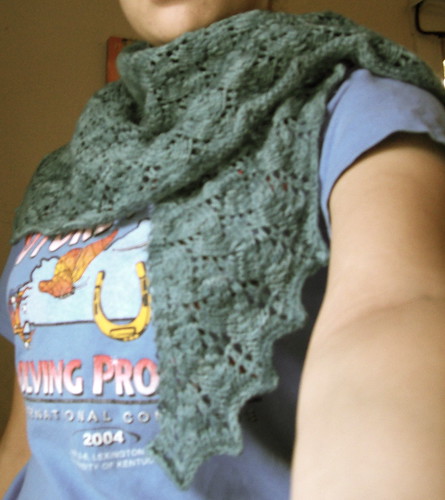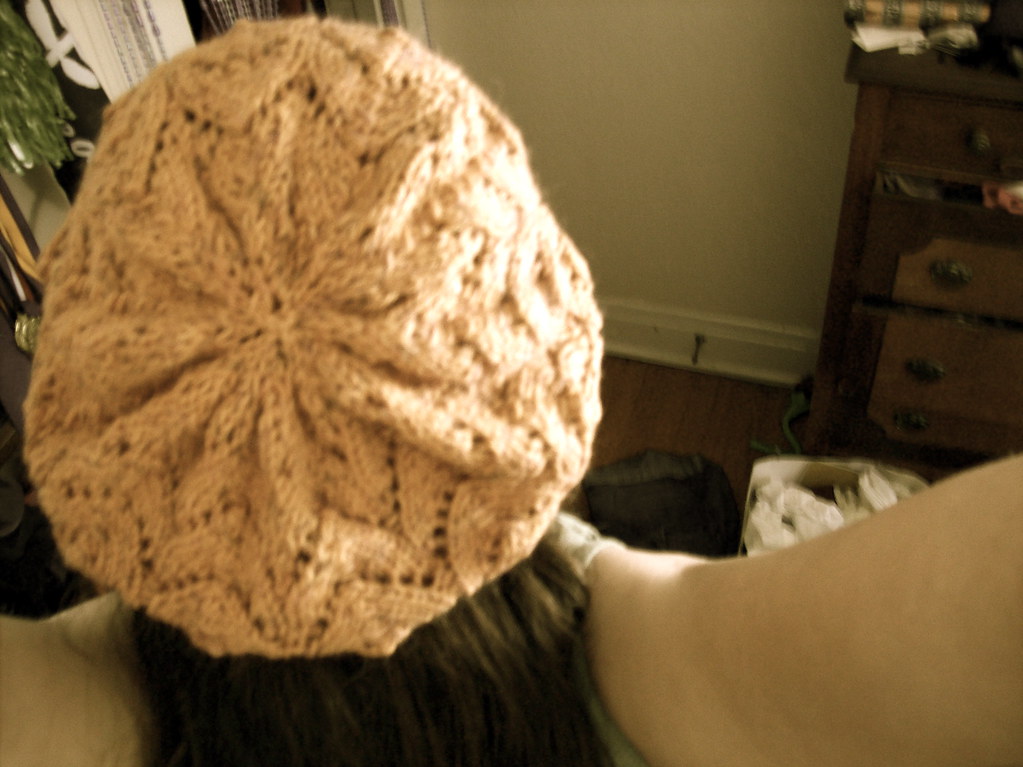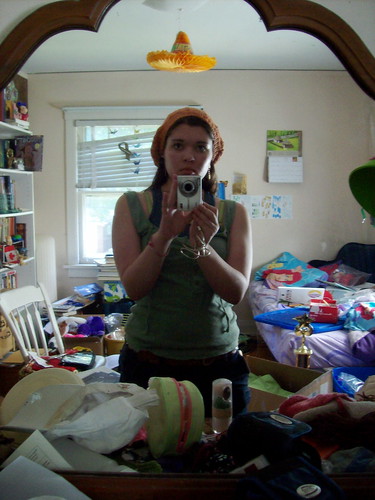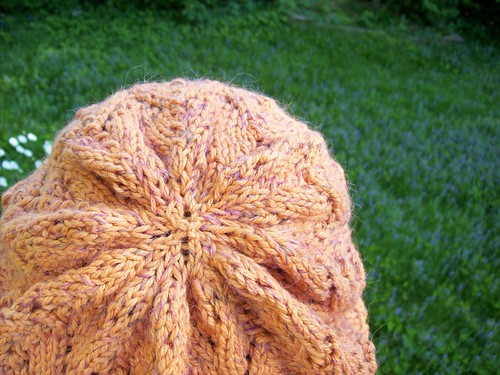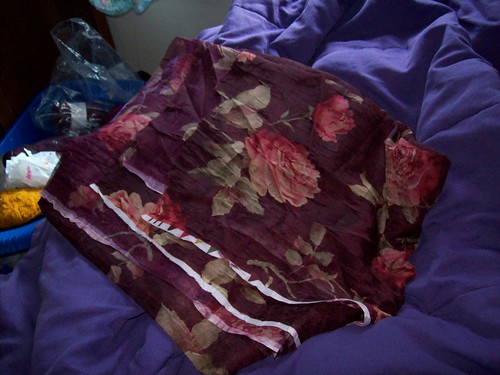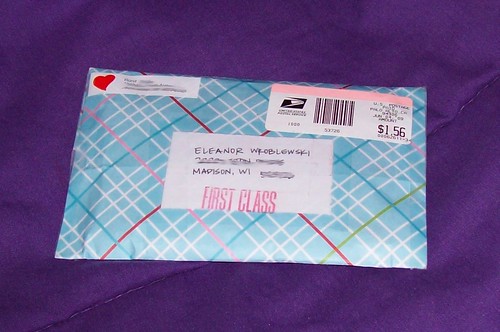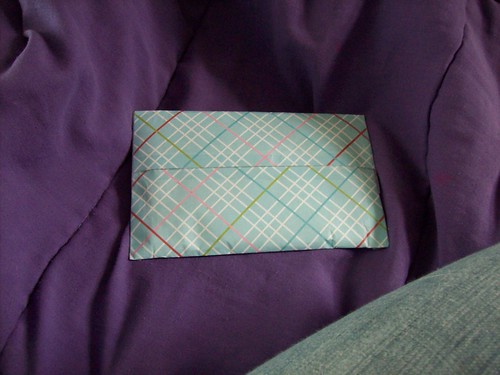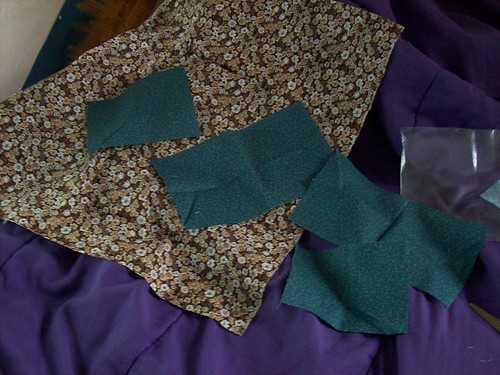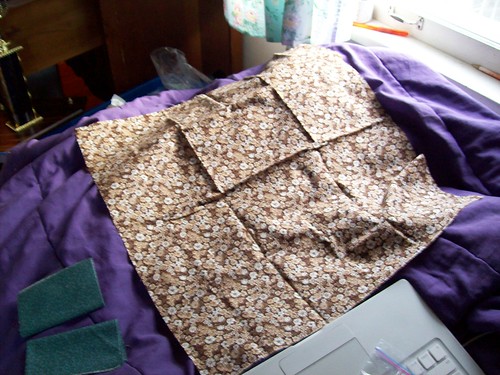Continuing my "lazy blogger" trend of just copy/pasting a paper written for class . . . I really need to actually start taking pictures, my goodness.
Knit Together in the Network Society: Ravelry and the Human-Centric Web
To
those that do not practice them, traditional textile crafts seem
incredibly old-fashioned, rooted in a pre-industrial past. But we cannot
step in the same river twice; no matter how closely we imitate the
creations of our foremothers, we cannot fully espouse the attitudes of a
person who has no choice but to spin their own yarn, even if we have
drop spindles in our craft bins or spinning wheels in our living rooms.
And, more importantly, when we are connected to an information
society—when we have reliable methods of transmitting and receiving
information across time and space—our knowledge is of necessity
organized differently. Rather than being masters of a few techniques
passed down from mother to daughter, many knitters of today are adept
pattern-readers (and modifiers), drawing from the compiled knowledge of
experts and sharing their innovations and technical expertise not only
locally but online. The website Ravelry, often called a “knitting social
network,” is one of the major points of access to the world’s knitting
knowledge to web-savvy knitters. With over 1,730,000 registered users (Ravelry: People Search),
and many more registering every day, it’s clear that (although Ravelry
does not gather any demographic data from its users) this is not just a
phenomenon of young knitters. Indeed, when I was a new knitter at age
18, a friend of mine who’s now in her sixties pointed me to this
invaluable source of socially-derived knowledge. By
harnessing the collective intelligence of users and controlling data
that is enriched by normal use of the site, Ravelry is profoundly
changing the experience of knitting in the modern world.
Ravelry,
founded in 2007 by Jess and Casey Forbes, a husband-and-wife
developer-knitter team (Jess is the knitter and Casey the developer),
exemplifies the “Web 2.0” paradigm as set out by Tim O’Reilly. O’Reilly
explained Web 2.0 as he saw it in a 2005 article, two years before the
founding of Ravelry. O’Reilly gives a list of seven characteristics he
sees as key to the Web 2.0 experience, though he qualifies this list,
saying, “excellence in one area may be more telling than some small
steps in all seven.” Ravelry is outstanding—indeed pioneering—in two of
these areas: the effective ways that it harnesses user data, and its
utilization of the collective intelligence of its users.
Ravelry
contains two key features for users: user “notebook,” where projects
can be entered, with information about the pattern, yarn, and needles
used as well as pictures; and the forums, where users discuss anything
from a favorite designer to a favorite TV show to a lifestyle choice.
When looking up a pattern on Ravelry, you can not only see the
designer’s suggested yarn on the main page, but you can click on a “yarn
ideas” tab and see about 30 yarns most commonly used to knit a given
pattern. Clicking on that yarn will in turn take you to projects made
with a given yarn, so you can see if it looks good (a big concern with
color-changing yarns), as well as comments written by users which may
alert you to a yarn’s unsuitability. Conversely, from a yarn’s page you
can browse some of the most popular projects made with that yarn. All
this information—what yarn is used for a pattern, what people are saying
about it—is made available because everything on Ravelry is linked.
Instead of just writing the name of the yarn used, users actually link
to the yarn’s “page” (maintained by either the yarn’s manufacturer or
volunteer editors). Pattern pages and yarn pages can also be linked
directly in the forums, and that link is “two-way,” as you can go from
any yarn or pattern page to a list of forum posts about it. By providing
an extremely useful service for individual users who just want to keep
track of what yarn they used for what knitting project, Ravelry is
building a massive collection of data that is helpful to its users.
Ravelry
also uses data gathered from users as well as information provided by
pattern designers in its “smart search.” Using a wide variety of social,
personal and factual data, a Ravelry user can search for patterns (and
yarns!) meeting a vast range of criteria. For example, browsing for
patterns for “women’s sweater” (or any other criteria that might be
interesting or relevant) I can choose to sort by “Hot right now,” “Most
popular,” or “Most projects,” among other purely social criteria, as
well as aggregate criteria (like “best result”) that take
socially-derived data into account. Ravelry is not only useful to users
that enter their own data—giving them a personal record of their own
knitting—but also to “freeloaders” who use Ravelry’s search capabilities
to find a pattern or yarn without entering data. But anyone who browses
the Ravelry databases is taking advantage of data gathered through
individual actions that are both useful and fun—a cornerstone of Web
2.0.
“In
the past, knitting traveled by artifact.” So wrote acclaimed knitting
designer Anna Zilboorg (2011) in a brief introduction to a sock pattern
published in Piecework magazine. She goes on to detail the processes by
which knitting traditions (and indeed, all textile traditions) have
evolved locally and cross-pollinated geographically in the days before
mass literacy and printed knitting patterns. But now, knowledge of
knitting travels in the heads of people on airplanes as well as in
books, magazines, and online. As Zilboorg says, “Today, . . . we have
access to all the ways people knit and the things they make. We can
engage in World Knitting, a genre that does not depend on the whims of
the moment but draws its inspiration from many traditions, melding them
harmoniously.”
Unlike
many traditionally intellectualized domains, knitting was not a part of
any information society until comparatively recently. According to
Richard Rutt (1989), the first knitting patterns published in the
English language appeared between 1835 and 1840. For at least the first
century of their existence, too, knitting patterns primarily served to
align the handwork of middle-class and wealthy women with mainstream
fashion. It is only in the past fifty years or so that Zilboorg’s “world
knitting” has even come into being, with knitting books and magazines
bringing the knitting of the world to the West rather than just
disseminating Western information. (Zilboorg, by the way, is not young
and not active online.)
Information and conversation about knitting has been on the internet as
long as there has been an internet, but before 2007, this information
was scattered, not synthesized. Podcaster WonderMike (2011) sums up
Ravelry’s revolutionary networking of the global knitting community: “If
you’re a relatively new knitter such as me—and I started in 2004—it’s
hard to remember life before Ravelry. How did we organize patterns, find
errata support, and interact with our fellow fiber junkies?”
A
microcosm of the internet’s potential, as well as its utility, Ravelry
shows us how powerful and useful the innovations of the Network Society
can be. We are coming back around to the old ways of knitting from the
other side, bringing all the baggage of the last 170 years of receiving
knitting knowledge from strangers to this new mode of networked,
repersonalized communication. Knitters are an older demographic,
according to surveys conducted by the Craft Yarn Council of America, and
Ravelry’s nearly two million users represent only a small fraction of
the many millions of knitters around the world. What will happen when
all of us are truly networked? What innovations from the next
technological revolution bring to the crafting world? And what will be
the next stage in the development of true “World Knitting”?
Works Cited
Craft Yarn Council of America. (2011). 2009 Research: 5,000 Passionate Knitters & Crocheters Speak Out. Retrieved from http://www.craftyarncouncil.com/know.html
O’Reilly, T. (2005, Sept. 30). What Is Web 2.0. Retrieved from http://www.oreillynet.com/lpt/a
/7425
Ravelry: People Search. (n.d.) Retrieved Oct. 26, 2011, from http://www.ravelry.com/people
/search#advanced=1
/search#advanced=1
Rutt, R. (1989). A History of Hand Knitting. Loveland, Colo.: Interweave.
WonderMike. (2011, Aug. 9). Ravel-ution [Episode 22]. Fiber Beat. Podcast retrieved from the Fiber Beat website: http://fiberbeat.com/
Zilboorg, A. (2011, Jan./Feb.). Firework Socks. Piecework, 19, 10-12.







